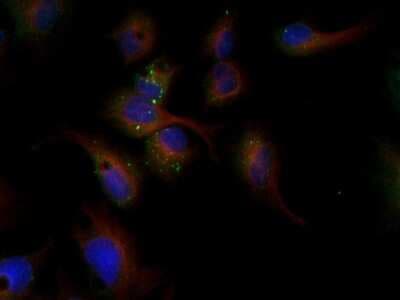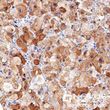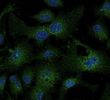LDL Receptor (LDLR) Rabbit Polyclonal Antibody
Frequently bought together (3)
Transient overexpression lysate of low density lipoprotein receptor (LDLR)
USD 396.00
Other products for "LDL Receptor"
Specifications
| Product Data | |
| Applications | WB |
| Recommended Dilution | Immunohistochemistry-Paraffin: 1:200 - 1:1000, Western Blot: 0.5 - 2 ug/ml, Knockout Validated, Simple Western: 1:100, Immunocytochemistry/ Immunofluorescence: 1 - 2 ug/ml, Immunohistochemistry: 1:200 - 1:1000 |
| Reactivities | Human, Mouse |
| Host | Rabbit |
| Clonality | Polyclonal |
| Immunogen | Synthetic peptide made to an internal portion of the human LDL Receptor protein (within residues 500-550). [Swiss-Prot# P01130] |
| Formulation | PBS, 0.05% Sodium Azide. Store at 4C short term. Aliquot and store at -20C long term. Avoid freeze-thaw cycles. |
| Concentration | lot specific |
| Purification | Immunogen affinity purified |
| Conjugation | Unconjugated |
| Storage | Store at -20°C as received. |
| Stability | Stable for 12 months from date of receipt. |
| Gene Name | low density lipoprotein receptor |
| Database Link | |
| Background | LDL Receptor (low-density lipoprotein receptor or LDLR) is a key determinant of plasma cholesterol levels and as a ubiquitously expressed cell membrane glycoprotein, it binds LDL, the major cholesterol-carrying lipoprotein of plasma, and transports it into cells via endocytosis. LDLR is found distributed from plasma membrane to intracellular compartments, cell surface (in the presence of PCSK9) and also localizes to Golgi apparatus as well as early/late endosomes and lysosomes. VLDL, IDL, HDL, and chylomicron remnant are also recognized by LDLR at neutral pH. Receptor-ligand complexes undergo endocytosis via clathrin-coated pits and coated vehicle dispenses to endosomes with LRP6 and ARH (also known as LDLR adaptor protein), connecting LDLR family protein and the endocytic machinery; thereby, acidic condition activates dissociation of internalized ligands. Released ligand particles further travel to lysosomes wherein the ligand is degraded by enzyme, while the receptors recycle back to cell surface. After internalization, LDL particles trigger reduction in HMGCR expression to suppress cholesterol biosynthesis; enhancement of ACAT activity to reduce toxic free cholesterol, and suppression of LDLR synthesis to reduce LDL uptake via SREBPs. Genetic mutations impairing LDLR function results in a condition with extremely elevated serum LDL levels and early onset atherosclerosis known as familial hypercholesterolemia (FH). |
| Synonyms | FH; FHC; LDLCQ2 |
| Note | This LDL Receptor antibody is useful for Immunocytochemistry/Immunofluorescence and Western blot, where bands are seen ~95 kDa and ~160 kDa representing the unglycosylated and glycosylated forms of the LDL receptor, respectively. |
| Reference Data | |
| Protein Families | Druggable Genome, ES Cell Differentiation/IPS, Transmembrane |
| Protein Pathways | Endocytosis |
Documents
| Product Manuals |
| FAQs |
| SDS |
{0} Product Review(s)
0 Product Review(s)
Submit review
Be the first one to submit a review
Product Citations
*Delivery time may vary from web posted schedule. Occasional delays may occur due to unforeseen
complexities in the preparation of your product. International customers may expect an additional 1-2 weeks
in shipping.






























































































































































































































































 Germany
Germany
 Japan
Japan
 United Kingdom
United Kingdom
 China
China







